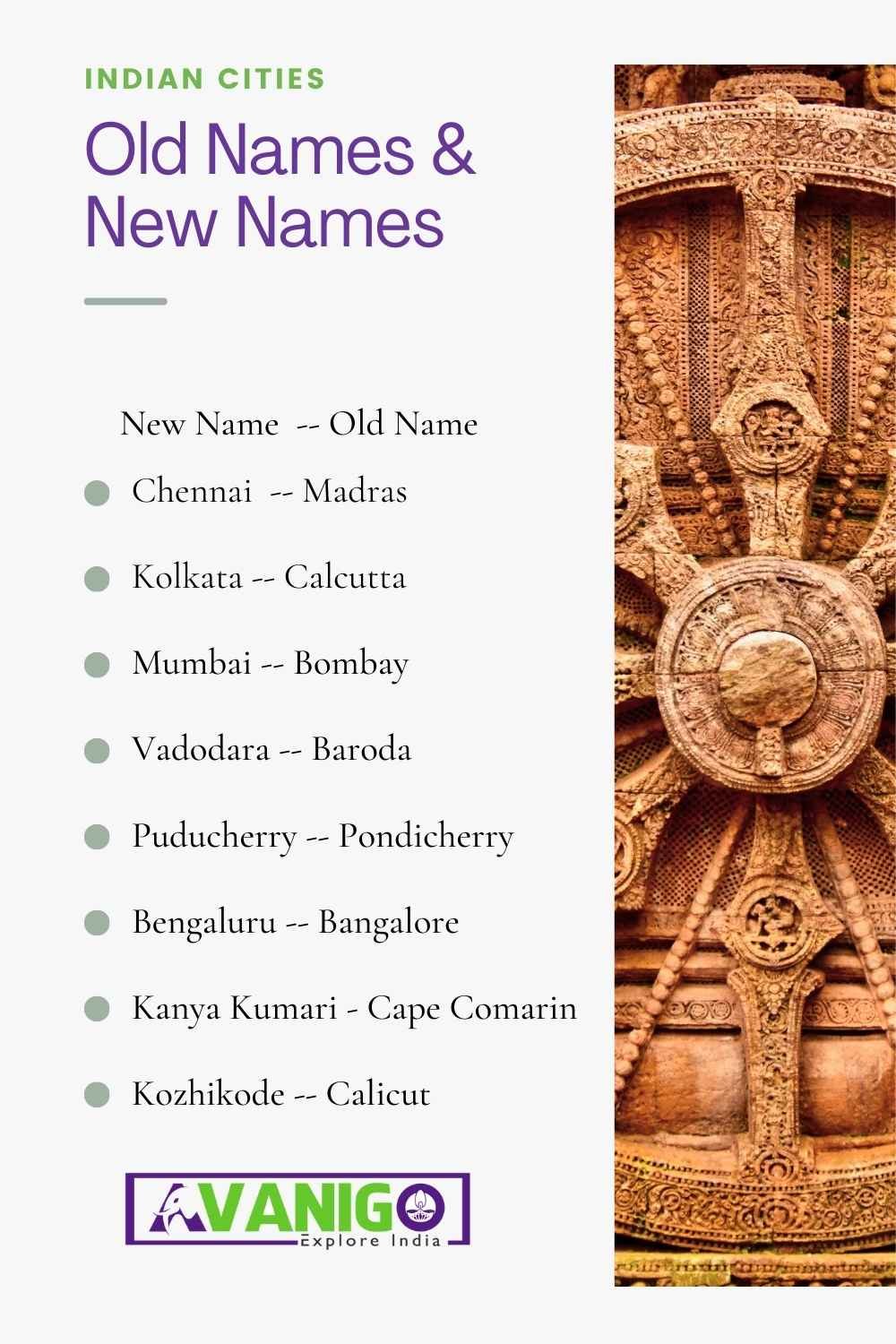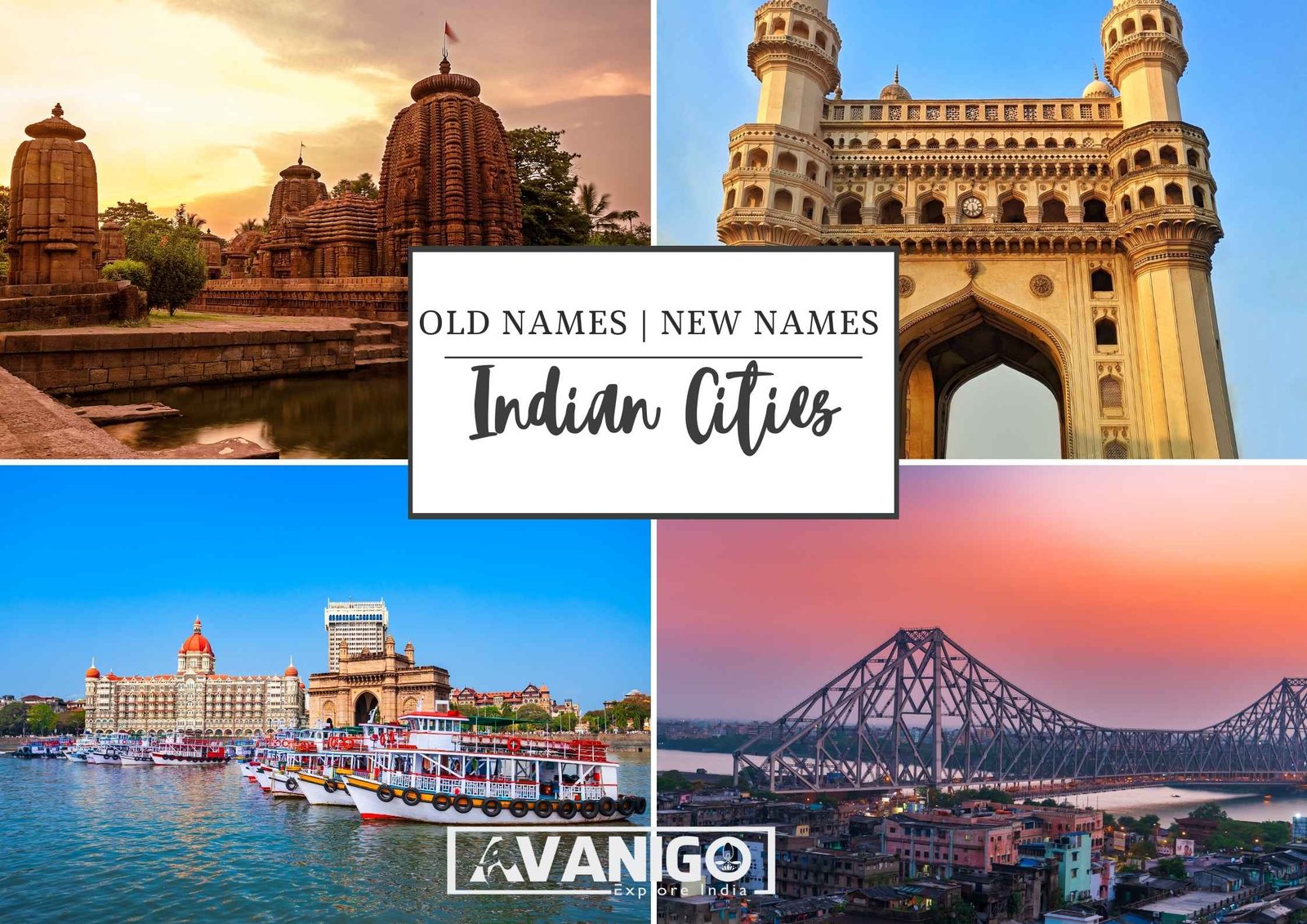Have you ever wondered why our cities have new names today compared to long ago? Different known cities like Delhi, Mumbai, and Chennai had some other names in the past. Just like people and places change over time, so do the names of cities. In this article, we will discuss the old and new names of Indian cities and the ways they evolved. Let us explore the exciting reasons why many Indian cities have gone through name changes over the years!
Quick Navigation
A List Of Old and New Names of Cities in India
Here is a comprehensive list of old and new names of Indian cities:
Chennai
The first name that comes in old and new names of cities in India is Chennai, which was renamed from Madras. The British rulers named Madras after they established their rule in India. In 1996, the Tamil Nadu government changed the name back to the Tamil name Chennai. Chennai means ‘the big, open country.’
Kolkata
Another city in the list of old and new names of cities in India is Kolkata, which was known as Calcutta. The British named the city after Lord Robert Clive. He was known as ‘Clive of India’ and helped the British defeat the Nawab of Bengal, Siraj ud-Daulah, in the Battle of Plassey in 1757. The original Bengali name of the town where the British set up a trading post was Kalikata. 2001, the name was changed back to the original Bengali name, Kolkata.
Mumbai
Mumbai also comes under new names of Indian cities, which got its new name in 1995 from Bombay. The island where the city is located was called Bombay Island by the Portuguese after they captured it from the King of Bhagwan in 1535. But its original Marathi name was Mumba or Maha-Amba, which referred to the Goddess Mumbadevi.
Vadodara
This city in Gujarat was known as Baroda during British rule. But its old name was Vadodara, which means ‘located near the Vad River.’ In 1974, the state government decided to rename it Vadodara.
Odisha
Earlier, this state was called Orissa, a name given to it during the British period. But its original name is Odisha, which comes from Odra Desha, meaning the land surrounded by the river Mahanadi. It was renamed Odisha in 2011 to restore its original identity.
Puducherry
Earlier known as Pondicherry, this Union Territory changed its name to Puducherry in 2006. The new name is derived from the Tamil word for ‘New Town,’ which Puducherry means. The town was initially named after the large Pondicheri trees that grew there.
Bengaluru
Today, the city is called Bengaluru, but it was named Bangalore during the British Raj. The English word Bangalore arises from the original Kannada term, Bengaluru. The city’s name is said to have resided in the 9th century and is attributed to an ancient Prakrit quote that mentioned the land as a locality of Bengaluru. So, it was renamed to the authentic Kannada name in 2006.
Prayagraj
Till 2018, the holy city of Prayagraj, situated at the Sangam (confluence) of the Ganga, Yamuna, and Saraswati rivers, was known as Allahabad. But in October 2018, the Uttar Pradesh government renamed it Prayagraj, a combination of ‘Prayag,’ meaning confluence, and ‘Aagraj,’ meaning senior-most. The new names of cities in India resonate with the historic and sacred worth of the city.
Kozhikode
Previously referred to as Calicut, this city in the northern region of Kerala permanently renamed itself to its traditional Malayalam name granted in the 1990s, Kozhikode. Calicut was a name bestowed upon it during Portuguese rule. Kozhikode translates to ‘small hilly region.’
Kanya Kumari
Earlier known as Cape Comorin, this coastal town in Tamil Nadu got its name restored to the original one, ‘Kanya Kumari,’ and is in the section of new names of cities in India from the local Tamil language. Cape Comorin was a name given by the British seamen.
Kalaburagi
Previously known as Gulbarga, this city in northern Karnataka got its official name changed to Kalaburagi in 2014, grouping it with the new name of Indian cities. Gulbarga was a name given during the rule of the Bahmani sultanate. However, historical texts state that the city’s original name derives from the Kalyani Chalukyan dynasty and was ‘Kalburgi,’ where ‘Kal’ refers to arts and ‘burgi’ fort.
Belagavi
Earlier known as Belgaum, Belagavi is among the new name of Indian cities, located on the border of Karnataka and Maharashtra, and was officially renamed Belagavi in 2014. Belagavi is the most authentic name traceable to ancient inscriptions from the local Kannada language.
Jamshedpur
This steel city in Jharkhand was known as Sakchi during the period of Tata Steel’s establishment. It was later renamed to Jamshedpur in 1919 by Lord Chelmsford after the name of Jamshedji Nusserwanji Tata, the founder of Tata group. The name Sakchi possibly means a place with a Shiv temple.
Gurugram
Gurgaon and Gurugram are names of Indian cities old and new, respectively, and this millennium city near Delhi got its official name changed to Gurugram in 2016 by the Haryana government. Gurugram is named after Guru Dronacharya, who is believed to have lived here according to Hindu puranas. Originally just a village, it grew rapidly during urbanization.

Ancient And New Names of Indian Cities
Some other names of Indian cities old and new, too, were given new names in the past but linked to their much older ancient names from history:
Hyderabad
Its original name was Bhagyanagaram, as this part of Telangana state was once part of the Chalukyan Empire, which ruled from a place called Bhagyanagaram about 2000 years ago. Then, it was known as Muhammad Nagar when the city was established by Qutub Shahi rulers in 1591 CE. Later, it was renamed Hyderabad by the Nizams of the Asaf Jahi dynasty in 1750.
Guwahati
One of Assam’s oldest cities is in the list of ancient and new names of Indian cities. Earlier, it was known as Pragjyotishpura and was mentioned in the Hindu epic Mahabharata. Prag means east, and Jyotish refers to astrology. Pragjyotishpura means the ‘Place of Eastern Learning,’ which signifies its ancient educational and cultural heritage as a center of culture and astronomy.
Warangal
Once a prominent capital city during the mighty Kakatiya dynasty that ruled over Telangana and Andhra regions, Warangal was known as Orugallu in ancient times. ‘Orugallu’ translates to ‘a village surrounded by a wall,’ signifying this region as a walled city-state. It hosted the great Shiva temple, where the Orugallu inscription mentions it as a land of lakes and green woods in the 11th century AD.
As a recap, below we present the list of old names and new names of Indian cities:
| Old Name | New Name |
| Calcutta | Kolkata |
| Bhagyanagaram | Hyderabad |
| Baroda | Vadodara |
| Orissa | Odisha |
| Bangalore | Bengaluru |
| Madras | Chennai |
| Gurgaon | Gurugram |
| Orugallu | Warangal |
| Pragjyotishpura | Guwahati |
| Sakchi | Jamshedpur |
| Cape Comorin | Kanya Kumari |
| Calicut | Kozhikode |
| Bombay | Mumbai |
| Pondicherry | Puducherry |
| Gulbarga | Kalaburagi |
| Belgaum | Belagavi |
| Prayagraj | Allahabad |
Importance of Knowing Old and New Names of Cities in India
Recognizing the relevance of old and new names of Indian cities throughout history is important in situating the rise and development of cities over many centuries of historical events. It creates respect for one another’s cultural-linguistic heritage in different parts of the nation. Sometimes, the names of places imposed by colonial powers were often at odds with the genuine local culture, and changing the names once again restored the suppressed identity and re-linked the gaps present in the rich ancient history that had been ‘stolen’ from the people for generations.
Swetha is a Content Specialist, LinkedIn Branding and B2B Marketing Consultant. When she is not in the world of B2B, she researches the roots and beauty of Indian Culture and Traditions. She is the author of the book: 365 Days 365 Posts – The Guide to LinkedIn Personal Branding, available exclusively on Amazon. Connect with her on LinkedIn.

